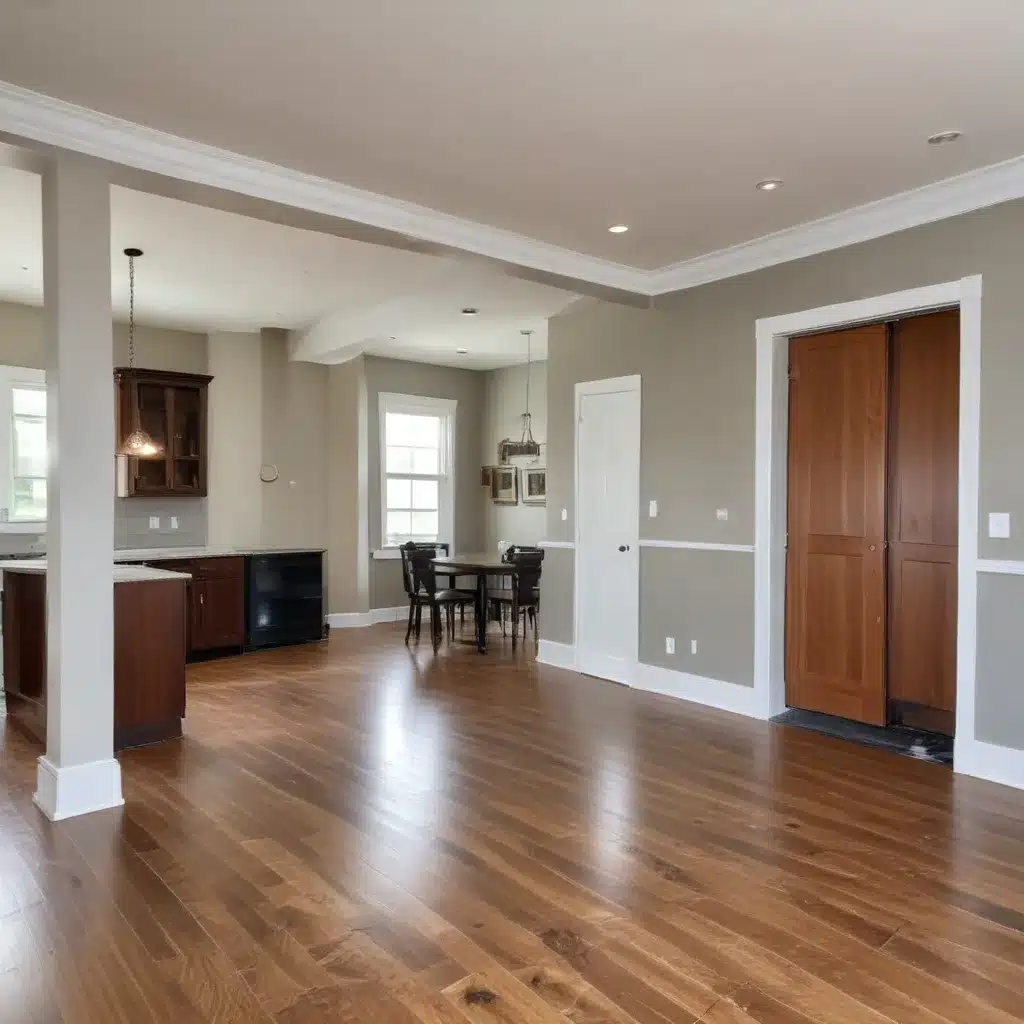The Plight of the Open Concept Home
I’ll be the first to admit it – I’m not the biggest fan of open concept living. As much as I love watching the Property Brothers and their various home reno shows, I’m often baffled by how many people clamor for this modern layout. Sure, it may be trendy, but from a functionality standpoint, I just don’t see the appeal.
The main issue I have with open concept? The noise. I’ve stayed in a few open concept homes, and let me tell you, it’s a recipe for pure chaos. When someone is cooking or doing dishes in the kitchen, there’s no escaping the racket – it permeates the entire space, making it nearly impossible for anyone to enjoy a moment of peace and quiet elsewhere in the house. Back at my parents’ place, my mom can listen to music while cooking, and my dad can watch TV in the living room without any overlap. But in an open concept home? Forget about it.
And let’s talk about this whole “always keeping an eye on the kids” thing. Look, I get it if we’re talking infants and toddlers, but beyond that stage? It just seems a tad overbearing, doesn’t it? Pretty much every adult alive grew up in a house with walls, and it wasn’t a big deal. So why the sudden need to have our kids under constant surveillance?
But I digress. The point is, open concept living, while visually appealing, can present some very real challenges when it comes to functionality and preserving a sense of privacy and intimacy within the home. And that’s where today’s topic comes in – how to divide open concept rooms without having to undergo a major, disruptive renovation.
Mastering the Art of Transition
One of the biggest hurdles with open concept spaces, as interior designer Maria Killam explains, is creating a cohesive flow from one room to the next. When you’re dealing with a wide-open floor plan, gone are the traditional walls and doorways that used to naturally define each space. Suddenly, you’re faced with the task of visually separating areas without physically dividing them.
The key, according to Killam, lies in mastering the art of transition. “In open concept homes, we need the kitchen to speak to the great room, the dining room, the foyer, the hall, and so on,” she says. “And it mostly doesn’t work to transition paint colours on drywall returns without the natural break provided by traditional moldings and doorways between rooms.”
This is why colour trends have shifted towards using a single, fresh neutral wall colour throughout the main open-plan areas, and then adding pops of interest and personality through decorative elements. By keeping the wall colours consistent, you create a sense of visual continuity that helps the various zones flow together seamlessly.
Divide and Conquer: Clever Tricks for Zoning
But what if you’re craving a little more definition between your open concept spaces? What if you want to add a touch of moodiness and drama to one particular area, without disrupting the overall harmony of the home? That’s where some clever zoning tricks come into play.
One of Killam’s favorite solutions? The trusty portiere, or door drape. “Portieres are a very decadent and traditional look, but I think they are ripe for revival,” she explains. “Especially now when so many of us struggle to create intimacy in rooms such as dining rooms with huge drywall archways open to the rest of the house.”
By installing a set of drapery panels in the doorway or archway, you can effectively create the illusion of a defined room, while still maintaining that sense of openness. The soft, flowing fabric adds an instant touch of luxury and coziness, and it also helps to dampen any lingering noise that might seep in from the kitchen or living room.
But the beauty of this approach is that it’s a relatively easy and budget-friendly fix, compared to the cost of a full-blown renovation involving new walls and moldings. Plus, as Killam points out, the drapes can be designed in a way that still allows for easy access and movement between the spaces.
Embrace the Moody and Dramatic
Another way to add a bit of division and drama to your open concept layout? Embrace those moody, deep wall colours that have been making a comeback in recent years.
As Killam explains, “The stark contrast on the corner where two wall colours meet is clearly attracting too much attention. It’s not terrible, but it’s not awesome yet.” But with a little bit of creative thinking, you can turn that contrast into a feature, rather than a flaw.
For example, consider painting the entryway or foyer a bold, saturated hue, and then allowing that colour to bleed seamlessly into the adjoining living room or dining area. The abrupt transition between the light and dark tones creates an instant sense of visual interest and separation, without physically dividing the space.
And if you really want to amp up the drama, you can incorporate other decorative elements that echo those moody tones, like a richly-coloured area rug, plush velvet furnishings, or even a bold piece of artwork. The key is to make the colour contrast feel intentional and cohesive, rather than haphazard.
Bring On the Boundaries (Subtly)
Of course, if you’re the type who really craves a bit more structure and definition in your open concept home, there are other ways to create those visual boundaries without resorting to major structural changes.
For instance, you could strategically place area rugs or furniture groupings to delineate the different zones within the space. Killam suggests using “groupings of furniture” to help define the various areas, while also creating a sense of coziness and intimacy.
Another option? Incorporate architectural elements like built-in shelving units or freestanding screens to carve out more distinct spaces. These types of features not only provide visual interest and separation, but they can also serve as functional storage or display areas.
And let’s not forget about the power of lighting. By using a combination of overhead fixtures, floor lamps, and task lighting, you can subtly highlight certain zones and draw the eye towards specific areas within the open concept layout.
Finding the Right Balance
At the end of the day, the key to mastering an open concept home is all about finding the right balance – between visual cohesion and defined spaces, between trendy decor and timeless functionality.
It’s about embracing the openness and airiness that drew you to this style in the first place, while also creating pockets of intimacy and privacy where you and your family can truly thrive. It’s about using strategic design elements to divide and conquer, without ever losing sight of the bigger picture.
So if you’re the proud owner of an open concept home, don’t despair. With a little bit of creativity and a healthy dose of design know-how, you can transform your wide-open spaces into cozy, inviting retreats that cater to your every need. And who knows? You might just find yourself falling head-over-heels in love with your open concept layout all over again.
After all, Sofa Spectacular is here to help you create the custom, cozy oasis of your dreams, no matter the layout. So why not let us be your guide on this open concept journey? The possibilities are endless, my friends.




